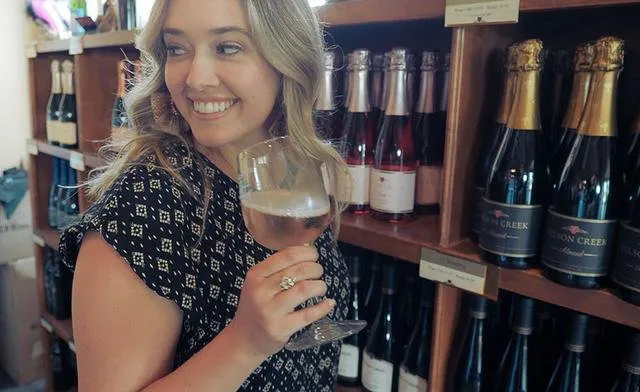
YOUR WINE TOUR ADVENTURE STARTS HERE


A few years ago (OK, more than a few), when I was just North of legal drinking age, I attended a wedding where the only beverage served was rosé Champagne. I thought it was the fanciest thing in the world and drank way more than my fair share, something I regretted mildly the next day until my Advil kicked in. Those intoxicating little bubbles were irresistible.
How exactly do bubbles end up in some wine but not in all? Is it like soda, where the carbonation is forcibly added to the liquid? Surely not. Wine snobs would never stand for something so crass.
As it turns out, the soda pop method is one way to sparkle up a wine, and sure enough, it’s the way frowned on by true oenophiles. The least frowned-upon way, referred to as the “traditional” method, is the one that was perfected in the Champagne region, where the wine world’s passion for effervescence started in the first place.
An important aside... To be called champagne, bubbly has to be made in the Champagne region of France, end of story. Everything else must be referred to differently. The generic moniker “sparkling wine” is normally used. The French take their specific bubbly so seriously that the champagne appellation is protected by international trade agreements. But while they keep exclusive control of their name, they haven’t cornered the market on their technique or its deliciousness. Which is great, because not everyone can afford to have authentic French bubbles tickle their nose whilst lounging in front of a roaring fire in a Les Trois Vallées ski chalet.
Back to reality and the topic at hand, how do bubbles get in your wine?
Simply put, most sparkling wine is double fermented. The first fermentation turns the grape juice into wine. The second fermentation turns the wine into bubbly. Tah dah!
The “traditional” method, called methode champenoise, first entails fermenting wine grapes into a dry still wine, the same process for any other vino. But instead of stopping there, the winemaker adds a measured amount of yeast and sugar, and securely seals the bottle for a second fermentation. The carbon dioxide produced during this extra fermentation becomes trapped in the stoppered-up bottle, releasing in the form of tiny bubbles only when the cork is popped. Note: You are actually supposed to remove the cork carefully, not “pop” it. Second note: I pop it anyway, it’s fun.
The less costly charmat or “tank” method achieves the second fermentation in a tank and transfers the bubbly into bottles only at the very end of the process.
And finally, the bulk method forces carbon dioxide gas into still wine in much the same way that soda is made fizzy. The bubbles are larger and shorter-lived than other methods, the price is lower, and the headaches are stronger. No wonder connoisseurs scoff.
Like all winemaking, sparkling wine consists of many different traditions and approaches that each affect the end result, which is why champagne (Champagne, France), prosecco (Italy), cava (Spain), asti (Italy), sekt (Germany and Austria) and crémant (France) can all taste very different and feature distinct mouthfeels.
Bubblies vary in taste from light and fruity to creamy and nutty and can range from incredibly sweet to bone-dry. If you’re looking for a sweeter bubbly, look for the words “doux” (sweetest), “sec” or “demi-sec” on the label. If you’re looking for something a bit drier, the self-explanatory “dry” or “extra dry” on the label will set you right. And if dry isn’t dry enough, look for variations of “brut,” ranging from brut (very dry) to “extra brut,” to “brut nature” (Sahara Desert dry).
For generations, sparkling wine has been reserved for special celebrations, but I’m partial to popping open a bottle more regularly. Next time you’re serving something that can be paired with white wine, switch things up and serve some bubbly. Life is short. Celebrate it often.
~ Kay Syrah
Wine Country Guru Gal
Official Blog